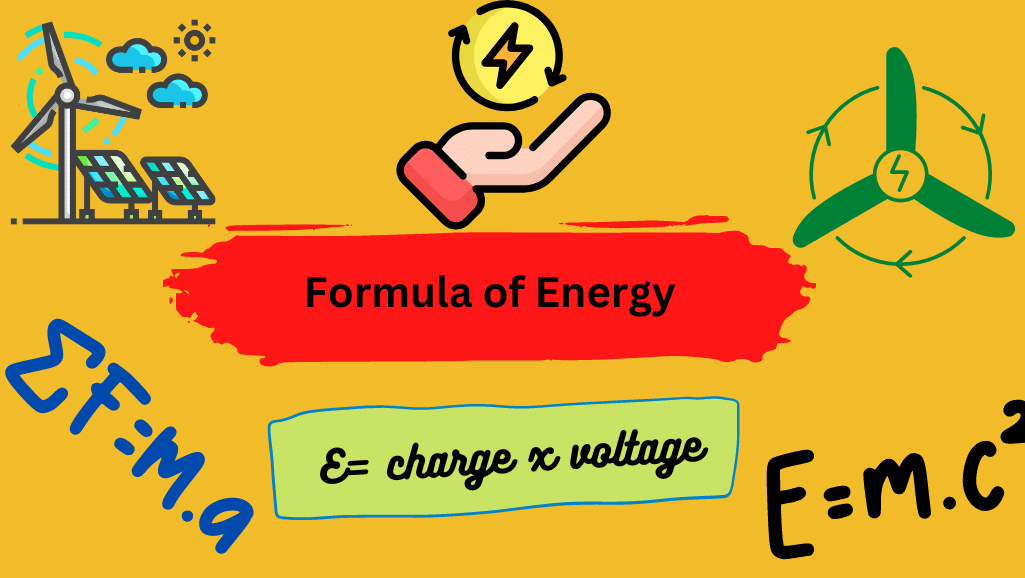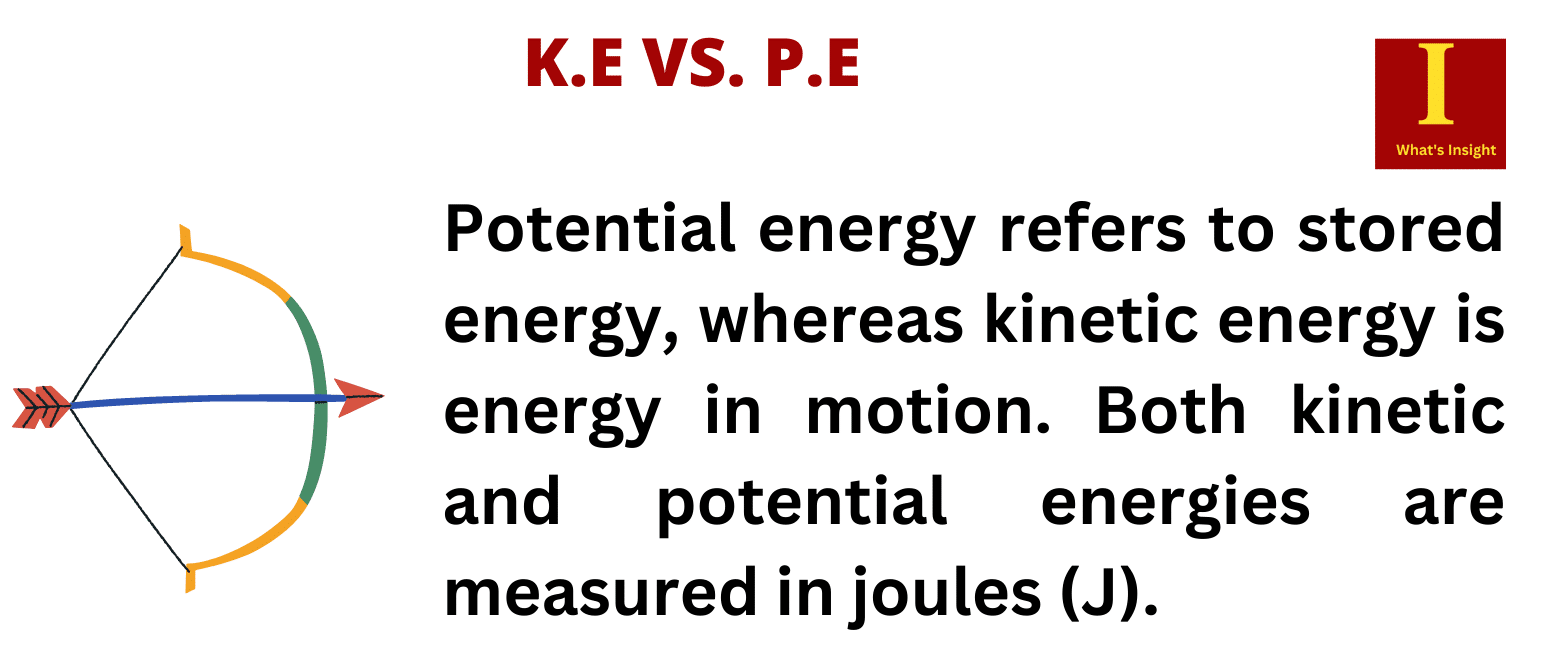Elastic potential energy is the energy stored in elastic materials as a result of stretching or compressing. For instance, energy stored in a stretched rubber band, springs, or trampolines in elastic potential energy. Furthermore, elastic potential energy is affected by the relative placement of various components in a system. When a spring is compressed or expanded, for example, its potential energy increases.
Elastic potential energy is the stored energy of a compressible or stretchable substance, such as a spring, rubber band, or molecule. Elastic potential energy is equal to the force multiplied by the distance travelled.
Table of Contents
Elastic Potential Energy Formula
Elastic potential energy is the stored energy of a compressible or stretchy item, such as a spring, rubber band, or molecule. It is equal to the force multiplied by the distance of movement. According to Hooke’s law, the force applied to stretch the spring is directly proportional to the amount of stretch.
Elastic potential energy = work = force (F) x distance (x)
F= Spring constant (k) x distance (x) (Hook’s law statement)
- elastic potential energy is measured in joules (J)
- k (spring constant) is measured in newtons per meter (N/m)
- x (extension) referring to the increase in length, is measured in meters (m)
According to the idea of work, the area under a force versus displacement graph represents the work done by the force. A force vs. displacement plot for spring is shown in Figure 1. The elastic potential energy may be computed from the work done since the area under the curve is a triangle in a perfect spring and no energy is lost.

Elastic potential energy = work done = area under the curve of force versus displacement graph
Elastic potential energy = 0.5 k x2
Elastic Potential Energy in simple terms
Elastic potential energy is the energy stored in an object when it is compressed, stretched or deformed. It is the potential energy that is stored in an object when work is done to change its shape. The amount of elastic potential energy stored in an object depends on the amount it is deformed and the stiffness of the object. When the object returns to its original shape, the stored elastic potential energy is released and converted into kinetic energy. The concept of elastic potential energy is important in many fields, including physics, engineering, and materials science.
Daily Life Significance of Elastic Potential Energy
Elastic potential energy is energy stored in an object when it is stretched or compressed, such as a spring or a rubber band. Here are some examples of elastic potential energy in daily life:
- Slingshots: Elastic potential energy is used in slingshots to launch projectiles. The elastic band is stretched back, storing elastic potential energy, and when released, the stored energy is converted into kinetic energy, propelling the projectile forward.
- Trampolines: Elastic potential energy is used in trampolines to provide a springy surface for jumping. The springs are stretched when a person jumps on the trampoline, storing elastic potential energy, and when the person lands, the stored energy is released, propelling the person back up.
- Archery: Elastic potential energy is used in archery to propel arrows forward. The bowstring is pulled back, storing elastic potential energy, and when released, the stored energy is converted into kinetic energy, propelling the arrow forward.
- Toys: Elastic potential energy is used in many toys, such as wind-up toys and pull-back cars. These toys are powered by stored elastic potential energy, which is released when the toy is wound up or pulled back.
- Springs: Springs are used in many everyday objects, such as pens, watches, and door hinges. These objects use the stored elastic potential energy of the spring to function properly. When the spring is compressed or stretched, it stores elastic potential energy, which is then released when the spring returns to its original shape.
Summary
Elastic potential energy is the stored energy of a compressible or stretchable object, such as a spring, rubber band, or molecule. It is equal to the force multiplied by the distance moved.
Related Topics
Kinetic Energy Formula
Work-Energy Theorem
Gravitational Potential Energy (w=mgh)| Easy Examples
Strain Energy Concept And Formula Derivation
Power Units- The Basics
Mechanical Energy Formula & Examples
Frequently Asked Questions
1. Where is elastic potential energy stored?
Elastic potential energy is the energy stored in elastic materials as the result of their stretching or compressing.
2. Is elastic energy potential or kinetic?
Elastic energy is a type of potential energy because it is stored in the bonds between atoms in an item or substance when it is subjected to temporary stress.
3. Is Liquefied Petroleum Gas the same as natural gas?
Liquefied Petroleum Gas (LPG) is not natural gas since it contains propane, whereas natural gas contains methane. LPG is produced as a byproduct of natural gas and crude oil refining operations. Once processed, LPG is stored as a liquid under pressure in gas bottles or tanks.
4. What is liquified natural gas?
Liquefied natural gas (LNG) is natural gas that has been liquefied for transportation and storage.
Natural gas is nearly completely composed of methane, with tiny quantities of other gases such as ethane, propane, butane, and pentane. A molecule of methane has one carbon atom and four hydrogen atoms.
5. What is a pressure-volume diagram?
The pressure-volume diagram (abbreviated as the PV diagram) is a graphical representation of pressure fluctuations in a closed system with regard to volume. P-V diagrams may be used to calculate the efficiency of a system as well as the work done by or on the system.
6. Thermal mass?
A substance’s thermal mass is its ability to absorb, store, and release heat. Different thermal mass materials absorb varying amounts of heat and absorb and re-radiate it for varying lengths of time. Because a brick wall has a higher thermal mass than a timber-framed hollow wall, it absorbs more heat than a timber-framed wall of the same thickness.
7. Hydrog turbines?
Hydro turbines are equipment used in hydroelectric power plants to transmit energy from flowing water to a rotating shaft, where it is converted into electricity. In response to the infusion of water into their blades, these turbines revolve or spin.
8. What is the Otto cycle?
The Otto cycle is a type of engine cycle that needs four piston strokes: induction, compression, ignition, and exhaust. The fuel and air mixture is compressed before combustion is induced by an electrical spark or other means.
9. Carbon footprint?
A carbon footprint, often known as a CO2 footprint, is the total amount of greenhouse gas emissions (including carbon dioxide and methane) produced by an individual’s actions during a given time period, typically a year.
10. What is an alternative fuel vehicle?
An alternative fuel vehicle (AFV) is a vehicle that runs on fuels other than gasoline and diesel. Alternative fuels are derived from non-petroleum sources. The fundamental purpose of using alternative fuels is to lessen our dependency on imported oil; hence, alternative fuels are produced from renewable sources.
More Interesting Topics
Light Energy| 5- Easy Examples
Body’s Preferred Source of Energy
Ultimate Source of Energy
Energy Stored in a Capacitor
Energy of Light
Thermal Energy Equation- Simple Overview
- BCl3 Lewis Structure in four simple steps - November 1, 2023
- PH3 Lewis Structure in four simple steps - October 8, 2023
- PF3 Lewis structure in four simple steps - September 24, 2023



